EMail:
Marty@ATSComms.com
INDUCTION LOOPS
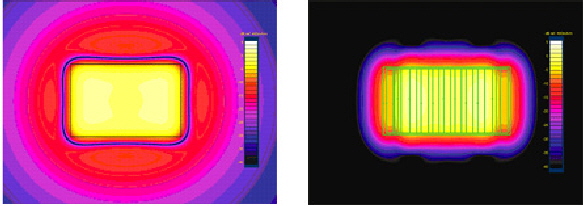
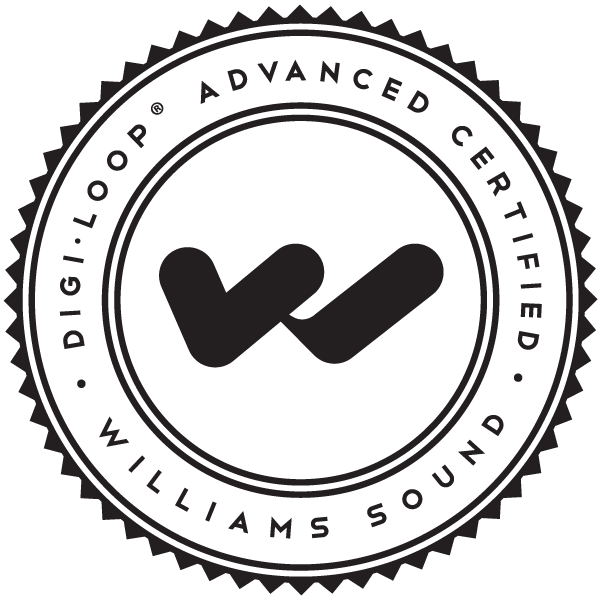
- Overview
A recent study determined that 17% of Americans suffer from hearing loss. Induction Loop hearing assist systems are in increasing demand in the United States by a population that is seeing higher rates of hearing loss and at younger ages than ever before. Studies show that our world is getting noisier, given accellerated construction projects, public transportation, and of course portable electronic devices with earbuds focusing sound directly down our ear canals.
Fortunately, hearing aides are also benefiting from ultra miniature electronics and computerization. They are now widely available with Telecoils (T-Coil), which allows them to receive audio signals from any induction loop system without any additional equipment. This helps preserve the privacy and dignity of the wearer by eliminating the effort, embarrassment, and stigma of having to seek out and wear a belt pack and headphones during an event.
Even better, because they are listening through their own hearing aides, the sound each person hears is optimized by their audiologist for their particular hearing loss. Plus, because hearing aides are in-the-canal devices, a person in the next seat is not bothered by the spill from headphones that are too loud.
Headphones, on the other hand, amplify all frequencies equally, including those the wearer cannot hear, which is why a hearing impaired person will often not know that they are too loud.
For those with hearing loss too minor for a hearing aide, but still desire hearing assistance, belt packs with headphones are available.
While the Europe Union recognized the value of induction loop hearing assist systems decades ago and have required them by law in places of public assembly as well as many customer service points, legislation and regulations in the U.S. are fairly new. See the Regulation section of our web site for more information.
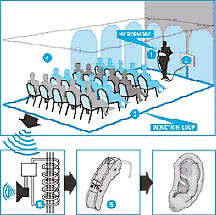

- What is an Induction Loop?
Essentially, an induction loop is a wire embedded into a room and connected to a voltage source amplifier. When activated with an audio signal, a magnetic field is generated within the confines of the loop. When an induction receiver is within the looped area, the magnetic energy is converted back into an audio signal.
For certain applications where the required coverage area is small (such as a service counter or a kiosk), a small loop can be embedded into furniture.
The magnetic field is not a radio frequency, and is not susceptible to interference from wireless mics or other radio or television transmitters. The range is very limited, and can be contained entirely within a room. Reception does not require line of sight as infra-red systems do.
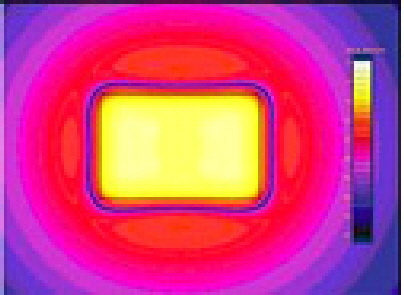
- Why Use a Loop?
Of the three types of assisted listening systems available (Radio /RF, Infra-Red), Induction Loops have unique advantages.
Hearing loss is not linear. People lose the ability hear certain frequencies or in severe cases they can hear only certain frequencies. Assisted hearing receivers with earphones amplify all frequencies equally, including those that people with hearing loss cannot hear.When coupled to a hearing aide, the frequency response is tailored ad optimized for each individual wearer, resulting in higher intelligibility at lower volumes.
Induction Loop adapters in the form of a neck loop can be offered with IR & RF receivers to enable the use of hearing aides.
With Infra-red and RF systems hearing challenged attendees must find and request belt pack receivers and headphones, then must return them at the end of the event. To many people, these devices feel like a badge of disability, along with a loss of dignity.
Infra-Red systems require a direct line of sight from radiator to receiver. The signal can disappear if a body, a chair, or other object gets in the way. IR radiators age after a few years and must be replaced, increasing the system’s total cost of operation. Infra-Red has a security advantage in that their signal cannot be picked up outside the walls of the room.
RF systems can transmit an unintended distance outside the room, and is subject to interference within the room from other radio and some lighting systems.
The technical specifications for the transmission of RF or IR audio is not standardized. A receiver from one manufacturer is not guaranteed to work with another manufacturer’s transmitter. Therefore a consumer cannot rely on a personally owned receiver. They must use a house receiver.
Installed Inductions loops are the only technology that is rigorously standardized and does not require an attendee to use a house receiver. Those who have a Telecoil (aka T-Coil) enabled hearing aide need no additional equipment. They hear the event directly through their hearing aide, which is tuned by their audiologist for their specific hearing loss, amplifying only the frequencies they need to hear, and in the correct proportion. Unlike headphones, hearing aides are not heard by people in neighboring seats.
Induction Loop systems saves the venue money by reducing the number of house receivers and headphones required to be maintained and batteried, reduces long-term maintenance costs, and provides attendees an improved customer and event experience.
- Can Anyone Do It?
Induction loop design is unique amongst its audio and video system cousins, including other assisted listening system designs. An Induction Loop system is a magnetic field generator with audio modulated on the field. The field strength and the audio frequency response must be uniform throughout the field in order to meet certification specifications.
Architectural elements such as building steel, rebar, reinforced concrete floors and even some ceiling tile grids can interfere with or absorb magnetic fields, negatively affecting performance. Insuring the field's uniformity throughout a room and adherence to ADA magnetic and audio performance specifications requires specialized equipment and training.
We are certified for all levels of induction loop design and installation and have installed loops in
churches, court rooms, auditorium theaters, and more. We draw on equipment from manufacturers we have selected for their reliably high quality equipment and performance.Our experience has enabled us to overcome “magnetically challenging” rooms that would not have met certification requirements with the typical loop designs.











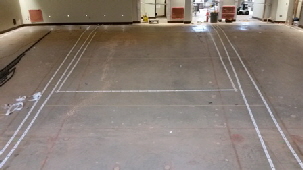
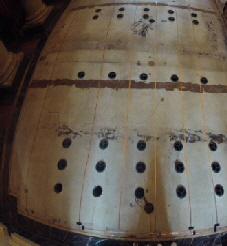


- How Is It Done?
International performance standards have been developed in order to standardize the performance of an induction loop system. Similar to the standards in place for the broadcasting of television and radio signals that allows any receiver to work with the transmitted information to produce the proper picture and sound qualities.
An improperly designed or installed loop or driver will not meet the standards and will not produce a uniform signal strength or frequency response in the room, and can not be certified to meet the ADA law or performance standards.
There are more than six different basic induction loop designs, each with their own unique properties and applications such as perimeter, low loss, low spill, cancellation, phased array, and others. Then there are several types of wire and a number of different loop drivers available.
Our process starts with a site survey to test and measure the intended space to detect conditions that would hamper or prevent the loop from meeting the certification requirements and to determine the engineering requirements needed to meet the project specifications. We take room to room privacy concerns into account as well as adjacent spaces with induction loops to prevent interferences.
For new construction we work closely with the architect and general contractor. We also work closely with your AV integration and service contractors. We then design the system and run proof tests when necessary. The installation occurs before the finished floor is installed, whether that be carpeting, wood, tile, etc.. We take integrity tests before and after the flooring and furniture is installed, and we perform the final certification test after everything is in place.
For retrofit installations we consider the rooms’ architecture, decor, flooring, furniture, walls, & ceiling, and more. We also consider the room's intended use, and the typical attendee demographics. We will run the same series of tests and work with your AV people.
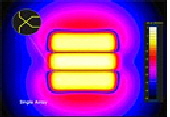
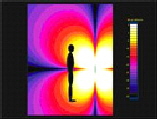
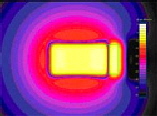
- Regulations & Standards
The U.S. ADA law specifies that “In each assembly area where audible communication is integral to the use of the space, an assistive listening system shall be provided.” For induction loops It specifies the signal to noise ratio, the uniformity of field strength & frequency response, and for all technologies the minimum number of receivers to be available,
The ANSI A117.1 standard now states that any induction loop system must meet the requirements of the performance standard IEC 60118-4.
The result is that it is now a legal requirement to ensure that loop systems in new buildings (or substantial refurbishments) perform at a level that really makes a difference for the end user. It will be illegal to install a sub-standard hearing loop and those responsible may be subject to criminal or civil penalties, and furthermore that claimed ignorance of the law shall not excuse noncompliance.
These regulations ensure that hearing impaired users with telecoil enabled hearing aids or suitable receivers will be guaranteed a good quality experience from a system that complies with standards for frequency response, field strength, background noise and area coverage.
- Applications
- Auditoriums
- Theaters
- Meeting Rooms
- Conference Centers
- Health Care Facilities
- Service Counters
- Kiosks
- Help Centers
- Drive Through Order Kiosks
- Emergency Call Boxes
- Elevators
- Huddle Spaces
- Museum Displays
- Airports
- Class Rooms
- Transportation platforms & Terminals
- Taxi Cabs
- Busses
- Digital Signage / Wayfinding Displays
- Visitor Centers
- Trade Show Exhibits & Education Theaters
Phone
301-754-2871





